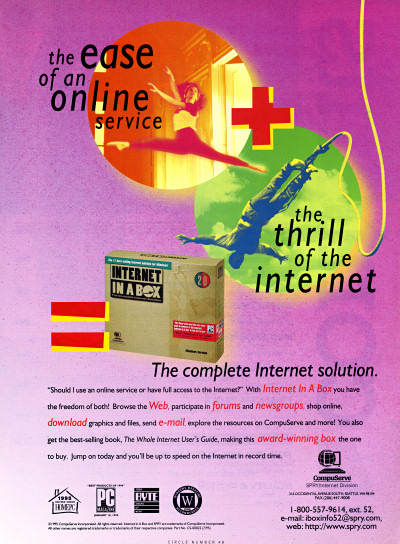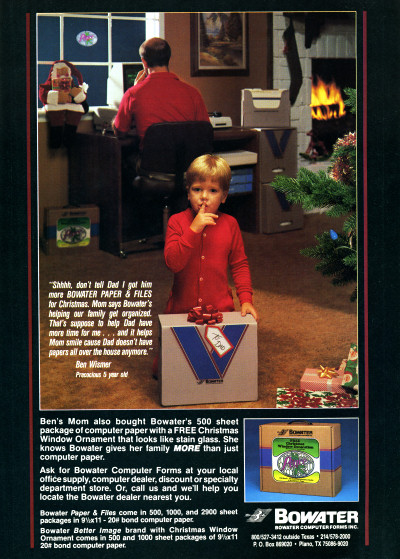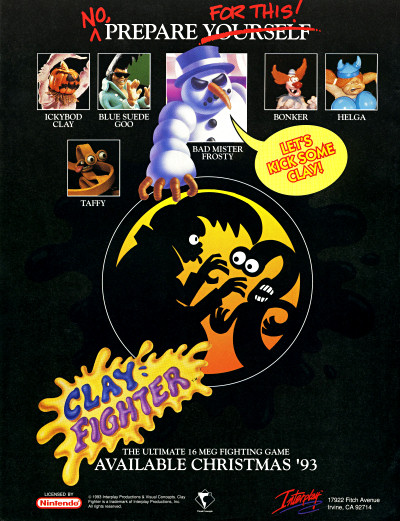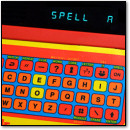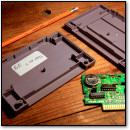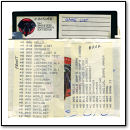Author Archive
[ Retro Scan of the Week ] Virtual Boy Wasteland
Monday, January 13th, 2014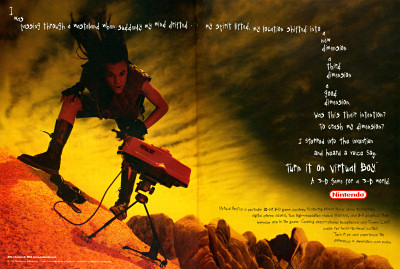 Virtual Boy: The #1 video game console on Mars.
Virtual Boy: The #1 video game console on Mars.
When the Virtual Boy first launched in 1995, I rented the console (yep, the whole console) and a few games from my local Blockbuster store. Prior to that time, I don’t remember Blockbuster offering any other systems for rent; I think it was a joint effort with Nintendo to get the novel machine into people’s hands to try it out. (Later, I also rented a Nintendo 64 and a PlayStation from Blockbuster. But I digress.)
In fact, here are some early digital photos of that Virtual Boy rental, courtesy of my Snappy Video Snapshot. The first, dated 8/29/95, shows one of my cats sleeping in the plastic hard case the Virtual Boy arrived in when rented from Blockbuster. The second shows the Virtual Boy sitting alone on a stool in my room, and the third (dated 8/30/1995) shows my friend playing the Virtual Boy.

The Virtual Boy was an interesting experience — not exactly mind-blowing, but neat. Its display was all red, all the time, but with stereoscopic 3D. I remember that it seemed expensive (MSRP of $179.99, which is $275.26 today when adjusted for inflation), and I remember thinking that if it only cost less, it could be successful.
But as we now know, the Virtual Boy failed to take off. Nintendo killed it the same year it launched in Japan, and the company pulled the plug in the US the following year. At that time I bought a Virtual Boy new in the box on clearance at Toys’R’Us for $30. I still have it; in fact it’s sitting next to me as I write this. Wario Land ranks among my favorite games for the system, and I always wished that this odd 3D console had lived long enough to receive a proper Super Mario Bros. title.
Why did the Virtual Boy fail? I wrote about some of the reasons in this 2009 article on Game Console Design Mistakes for Technologizer. I also briefly analyzed the Virtual Boy for my History of Stereoscopic 3D Gaming slideshow for PC World in 2011.
In some ways, it’s a shame that the system died so early, but in absolute business terms, its early demise made perfect sense. The Virtual Boy was an odd machine without broad appeal — one of Nintendo’s rare flops — but it makes for a heck of a video game collector’s item today as a result.
Discussion Topic of the Week: Have you ever played the Virtual Boy? What’s your favorite game for the system?
—
See Also: Virtual Boy Vortex (RSOTW, 2012)
See Also: The History of Stereoscopic 3D Gaming (PC World, 2011)
[ Retro Scan of the Week ] Low-End Virtual Reality
Tuesday, January 7th, 2014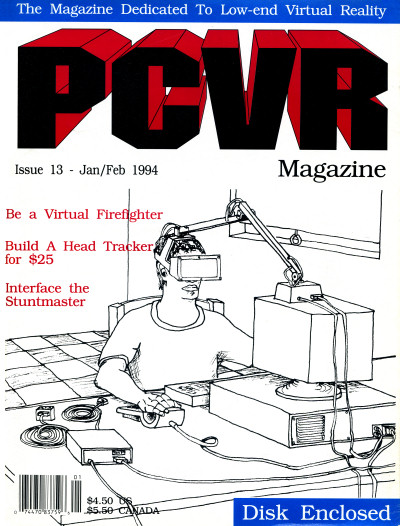 Every new idea is an old idea with more transistors.
Every new idea is an old idea with more transistors.
A few years ago, a relative gave me a couple issues of PCVR Magazine, a low-circulation 1990s periodical dedicated to virtual reality. Here’s the cover of the Jan/Feb 1994 issue, which features an illustration of the magazine’s build-it-yourself head tracker project.
In the early 1990s, the “virtual reality” concept hit a peak in the popular media that coincided with dozens of companies pursuing motion-tracking head-mounted displays — both with honest attempts and blatant gimmicks.
If I had to guess why VR exploded in the popular tech consciousness at that particular time, I would trace it it to the emergence of small, relatively low-cost color LCDs — the kind that made portable consoles like the Atari Lynx and Sega Game Gear possible. Compared to bulky, power-hungry CRT displays, the (relatively) thin, low-power LCDs could be worn on the head with mobility and without too much discomfort. That prompted a minor Cambrian explosion of VR headset hardware.
But the display technology just wasn’t there yet. Affordable LCDs were very low resolution (think 320×200 or less), and higher-resolution LCDs cost thousands of dollars a piece.
In addition, the hardware and software required to generate convincing virtual reality experiences were neither affordable nor generally available. So genuinely immersive VR found itself stuck in corporate and university research labs; meanwhile, the public got trickle-down fad headsets like the Stuntmaster.
Today, we find ourselves in the middle of a VR renaissance thanks to Oculus Rift. But this time, we may actually be at the edge of mainstream virtual reality headsets because the technology has come quite a long way since 1994. I look forward to meeting your 3D virtual avatar in cyberspace soon.
Discussion Topic of the Week: Have you ever used a virtual reality headset of any kind? Tell us about it.
—
See Also: Retro Scan of the Week Special Edition: “At Last! Reality For the Masses!” (VC&G, 2007)
See Also: The History of Stereoscopic 3D Gaming (PC World, 2011)
[ Retro Scan of the Week ] SNK Neo-Geo CD
Monday, December 30th, 2013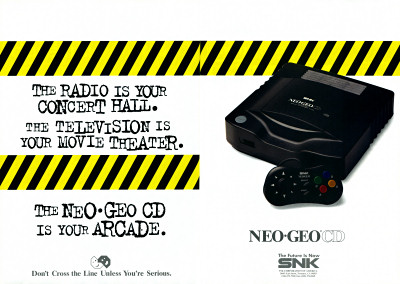 “Don’t cross the line unless you’re serious.”
“Don’t cross the line unless you’re serious.”
In all my two decades of video game collecting adventures, I’ve never personally owned a Neo-Geo console. (I have owned a Neo-Geo Pocket Color, but that’s different.) It’s probably because I started collecting with inexpensive systems, games and accessories, and the Neo-Geo line was always scarce and expensive. Also, I was never particularly drawn to the Neo-Geo’s brand of action-heavy arcade games.
So part of me wants to rectify the lack of Neo-Geo in my life, even if only for completion’s sake. But then again, I’ve played the games on emulators for over a decade now, and I’ve been satisfied with that. What do you guys think?
Discussion Topic of the Week: What was your first CD-based video game system?
[ Retro Scan of the Week ] Printer Paper Christmas
Monday, December 23rd, 2013[ Retro Scan of the Week ] Benj’s 1989 Christmas List
Monday, December 16th, 2013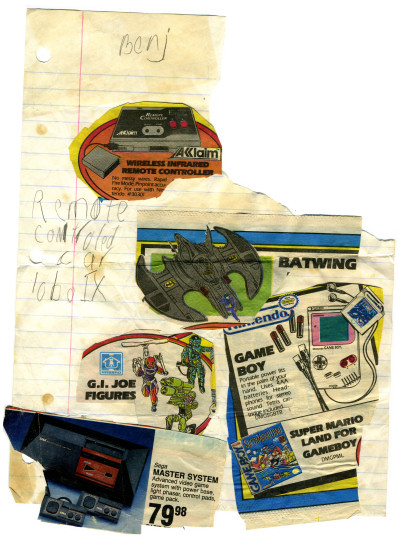 An early example of the rustic illustrated Christmas list
An early example of the rustic illustrated Christmas list
While sorting through my childhood papers and effects recently, I came across this amusing Christmas list from 1989. I was eight years old then, and I apparently ripped out pictures of the toys I wanted from weekly newspaper advertisements and pasted them on a sheet of 8.5″x 11″ wide-ruled notebook paper. The result was a rare illustrated Christmas list that I don’t remember making before or since.
(I’m not sure why there is a big chunk of the page missing in the upper-right corner, by the way. Perhaps I changed my mind on some item and physically removed it from my list.)
What’s notable for our purposes is the healthy contingent of video game related items on the list. There’s a wireless remote for the NES, a Game Boy (which had just been released that year), and even a Sega Master System.
[ Continue reading [ Retro Scan of the Week ] Benj’s 1989 Christmas List » ]
The VC&G Christmas Collection (2013 Edition)
Friday, December 13th, 2013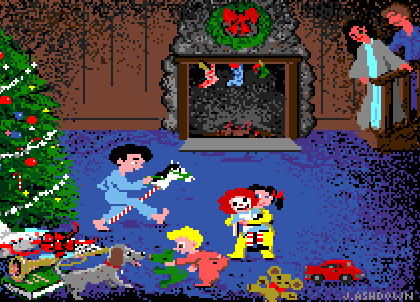
It’s that time of year again: the Yuletide. In celebration, I thought I’d search through the VC&G archives for Christmas material and collect it all in one place. (I also did this the last few years, but I have updated the list of links with new material for 2013.)
Below you will find a list of everything Yule-flavored from this site and my offsite freelance work. There are a couple slideshow gems in there that you don’t want to miss, so check those out if you haven’t already.
I have a soft spot for Christmas, having been raised with the tradition, so this list is for me as much as it is for everyone else. After going through these things again, it’s amazing to see how much Christmas stuff I’ve posted over the years. I hope you enjoy it.
[ Continue reading The VC&G Christmas Collection (2013 Edition) » ]
[ Retro Scan of the Week ] Doom is 20
Monday, December 9th, 2013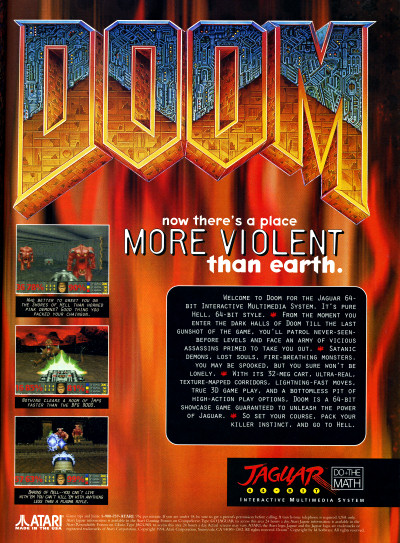 One of the best reasons to own a Jaguar circa 1994
One of the best reasons to own a Jaguar circa 1994
Twenty years ago this week, id Software launched one of the most important and influential PC games of all time: Doom. It started as a modest shareware download but grew to change the entire video game industry. To explain how, here’s 2009 Benj writing about the title for a PC World slideshow:
Id’s archetypical first-person shooter triggered a sea change in the PC game industry, which had formerly been dominated by slow, plodding strategy turn fests, brainy simulations, and stilted PC action titles of yore.
In contrast, Doom was the first of a new generation of fast-paced, smooth action titles that utilized new visual techniques to push PC hardware to its limits. With Doom, PC gamers could experience fluid gameplay, graphics, and sound that easily topped what was found on home game consoles of the day — an uncommon achievement at that point.
Moreover, it introduced exciting new network multiplayer options that are widely imitated to this day, coining the term “deathmatch” in the process.
From its lowly roots as a MS-DOS shareware title, Doom spread like a weed to other platforms, including game consoles, which now count first-person shooters as one of their best-selling genres.
“Doom defined the 3D shooter genre and made multiplayer gaming mainstream,” says Tim Sweeney (founder of Epic Games and creator of the Unreal Engine), “And it did them with such incredible polish, artistry, and foresight that it created an industry.”
Considering that Doom launched in 1993 via shareware channels, I’m not aware of when or in what publication the first advertisement for Doom appeared. (I believe GT Interactive became distributor for the full, boxed PC version of Doom much later, but I could be mistaken.)
So instead, I found this nifty November 1994 scan for the Atari Jaguar version of Doom. I received this version of the game for Christmas in 1994, and it was an amazing gift.
Pushing the PC Limits, Jaguar Relief
Most people don’t remember how much horsepower Doom required in a PC at the time — at least 4 MB of RAM, a mid-range 486 CPU, and a sound card to run passably well. So I had trouble running the game on any PC up to that point.
In 1993, we had one 486 in the household with exactly 4 MB of RAM (to contrast, my personal PC sported a 16 MHz 386 and 2MB RAM), and I had to make a special 5.25″ boot disk that loaded fewer resident DOS drivers, etc. so I could run Doom on that 486 at all. If I recall correctly, I didn’t have enough spare RAM to load the SoundBlaster drivers at boot, so the experience was limited. My friend had to run Doom on his mom’s 486 the same way. Even then, the game didn’t run at full frame rate. Doom pushed the limits.
So coming from that environment, it was an amazing convenience to just plug a Doom cartridge into the Jaguar and play, full-speed, full-screen, with glorious sound and no hiccups. My brother and I played a lot of Doom on that console well into 1996 — until I got a more powerful PC that could run Doom with ease.
Until the PlayStation port of Doom came out (late 1995), the Jaguar port was widely considered the best port of the game (in terms of screen window size, lighting effects, monster interaction, sound, controls, and frame rate) available on consoles. Its biggest drawback was lack of a soundtrack during gameplay. I think that’s because John Carmack used the Jag’s DSP co-processor to handle graphics routines instead of music, which was unconventional on that platform.
But I digress. What a great game. I still play Doom regularly via modern source ports on the PC — most recently on my new 1080p big screen TV set. Add on Xbox 360 controller support via ZDoom, and you’ve got Doom heaven. It’s a game that never seems to get old for me, even 20 years on. That’s the mark of a true classic in my book.
Discussion Topic of the Week: How did you feel when you first played Doom? What are your memories of the occasion?
[ Retro Scan of the Week ] ClayFighter Launch Ad
Monday, December 2nd, 2013My, oh my. What a blast I had with ClayFighter for the Super NES when it launched around this time 20 years ago — in December 1993.
I rented the game several times from Blockbuster and delighted my brother by forcing its Elvis-like character to jump repeatedly, eliciting a humorous”Uh-huh” sound every time. The graphics were great and the spirit of humor was plentiful in this claymation-based title.
The advertisement itself is a parody of an iconic coming-soon ad for Mortal Kombat on home consoles from 1993. Interestingly, I’ve never featured that Mortal Kombat ad in a RSOTW — that may have to be remedied soon.
Discussion Topic of the Week: What’s the best fighting game for the Super NES?
The VC&G Thanksgiving Collection (2013 Edition)
Tuesday, November 26th, 2013 Hello, and welcome to VC&G’s 2013 Thanksgiving Spectacular. I’m your host for this evening, Burt Edwards.
Hello, and welcome to VC&G’s 2013 Thanksgiving Spectacular. I’m your host for this evening, Burt Edwards.
Thanksgiving is a great excuse to spend time with family around a four-player game of Gauntlet IV for the Sega Genesis. Or perhaps a Super Bomberman tournament. Or eight-player networked Atari Jaguar Battlesphere? Did I mention a 16-player Mario Kart Double Dash LAN battle?
One of each, please.
But before you stuff yourself with turkey and get lost in multiplayer fragfests, feel free to enjoy the following Thanksgiving-themed posts I have culled from the annals of VC&G history.
- [ Retro Scan of the Week ] Gather ‘Round the Videotex (2013)
- [ Retro Scan of the Week ] Family Computing (2011)
- [ Retro Scan of the Week ] An Apple //c Thanksgiving (2010)
- A 1980s Home Computer Family Celebration (2009)
- [ Retro Scan of the Week ] The NES Action Set Family (2009)
- Guest Editor Introduction: ULAF EDIT THE GHOST THIS WEEKS (2007)
- What Computer Nerds Should Be Thankful For (2006)
That is all for now. Let the thankfulness begin!
